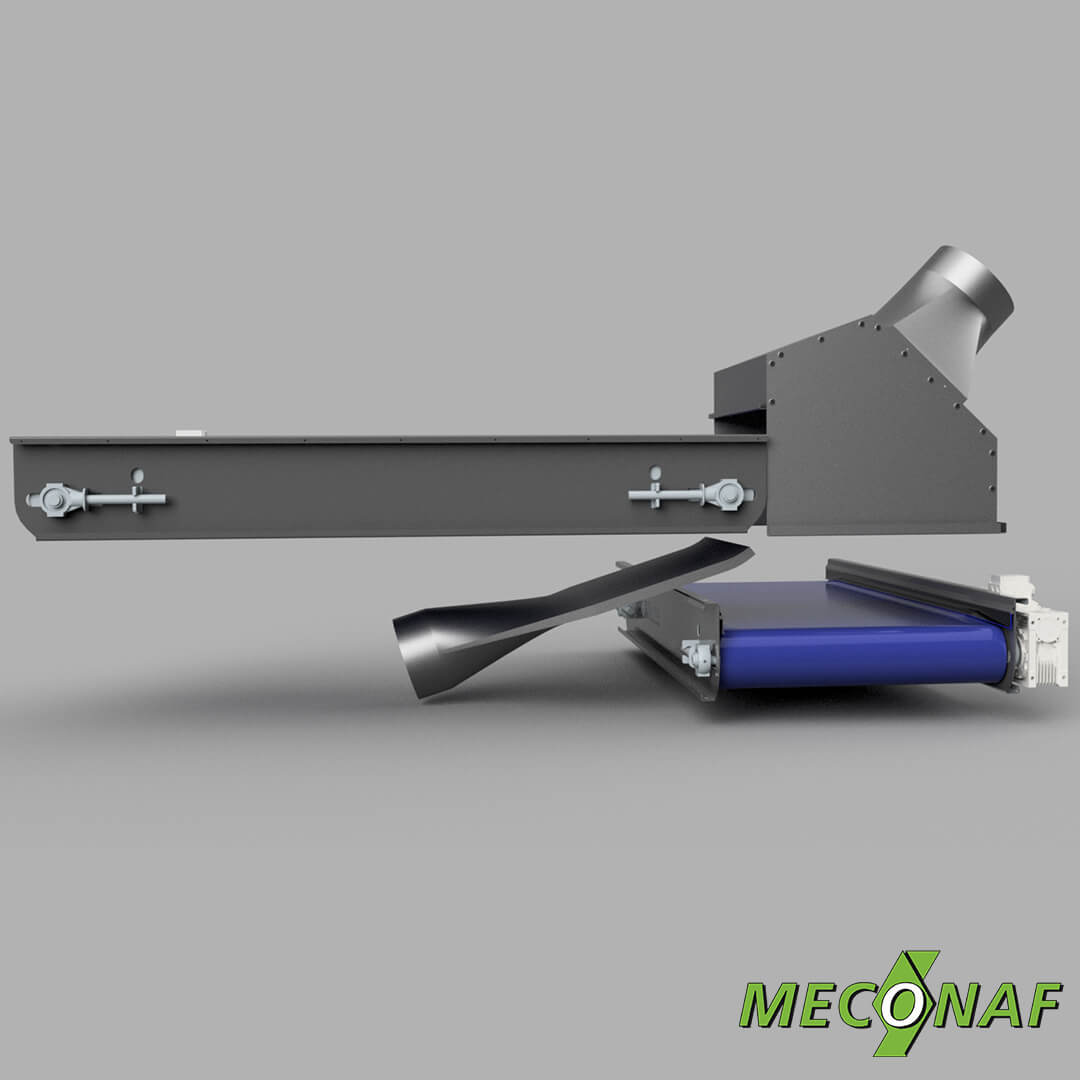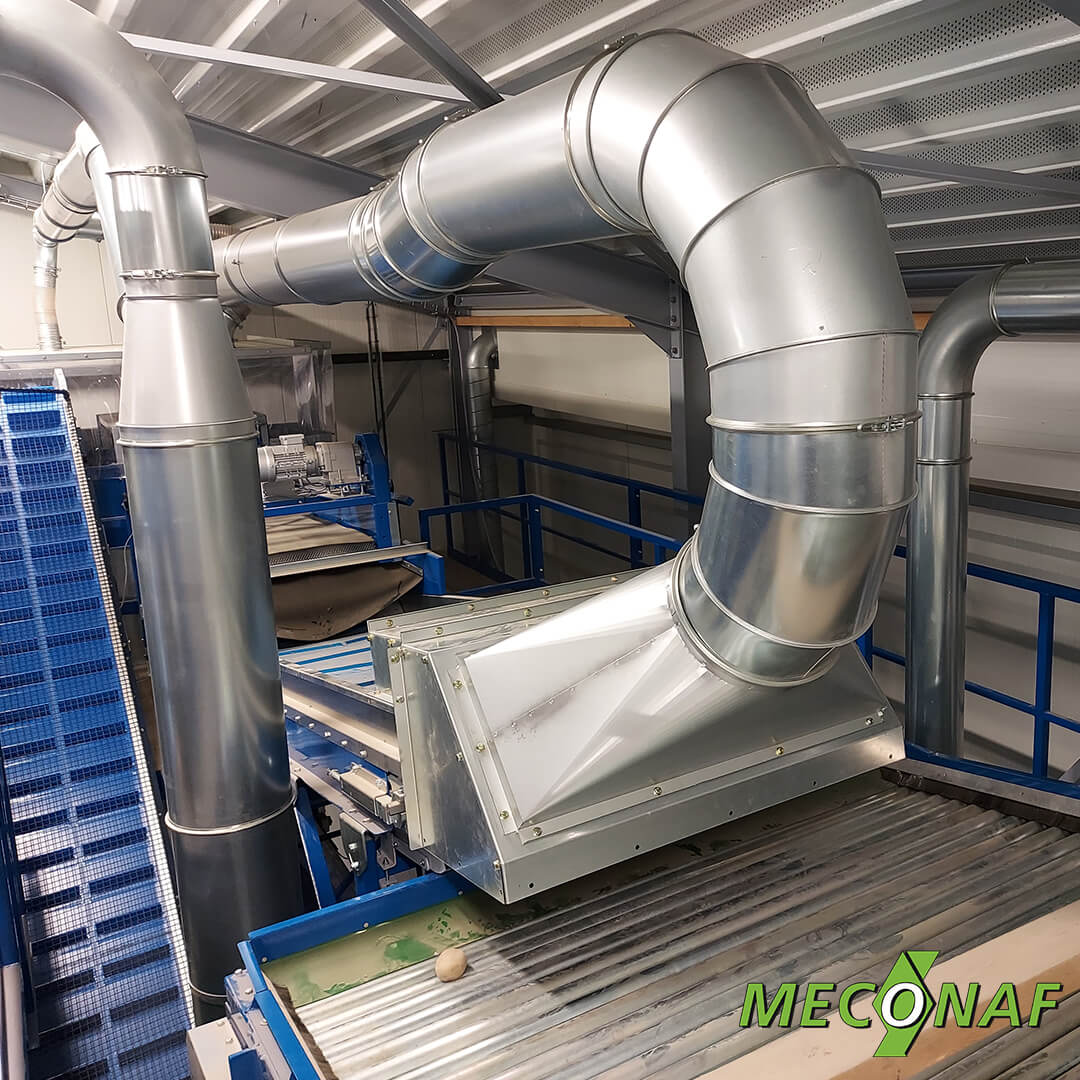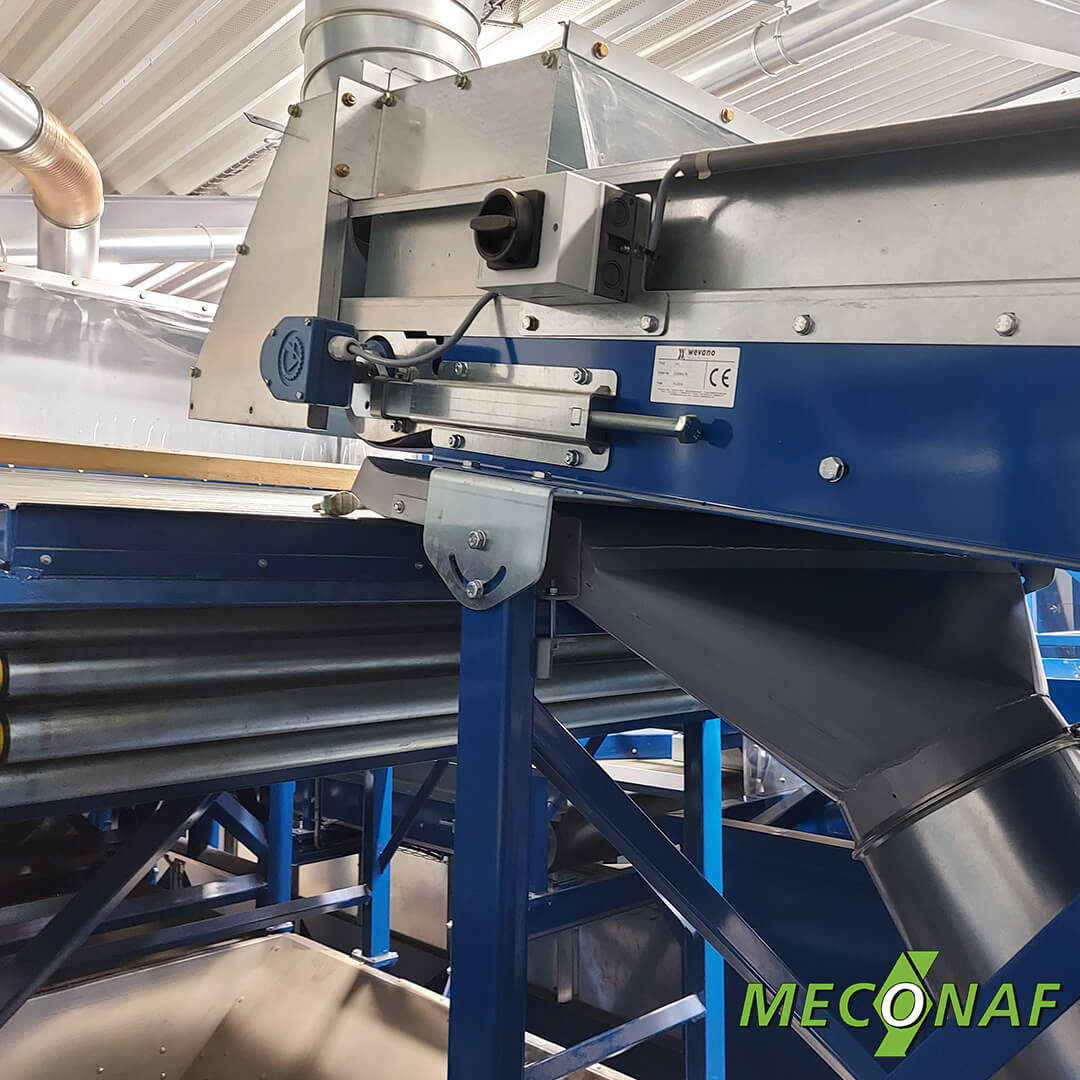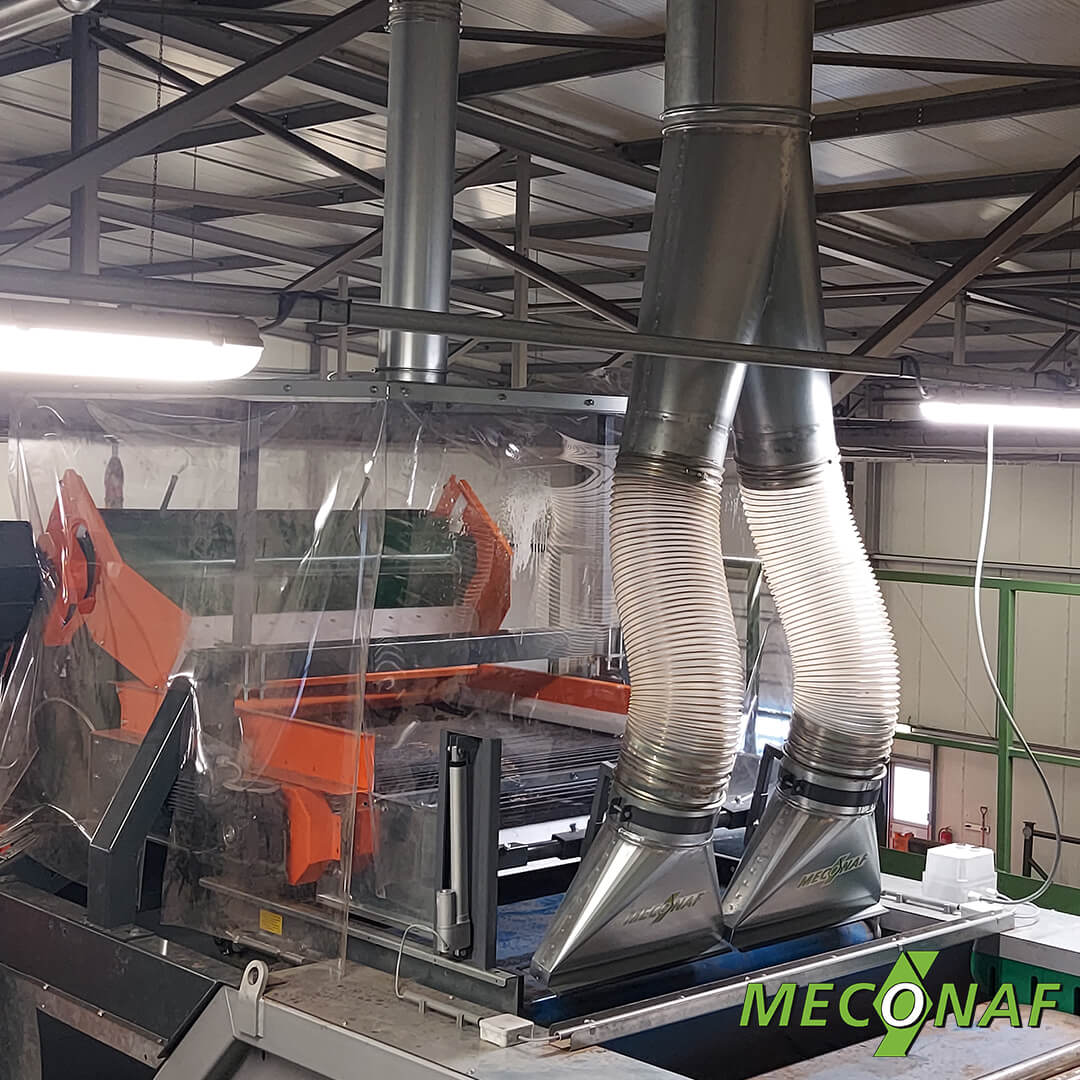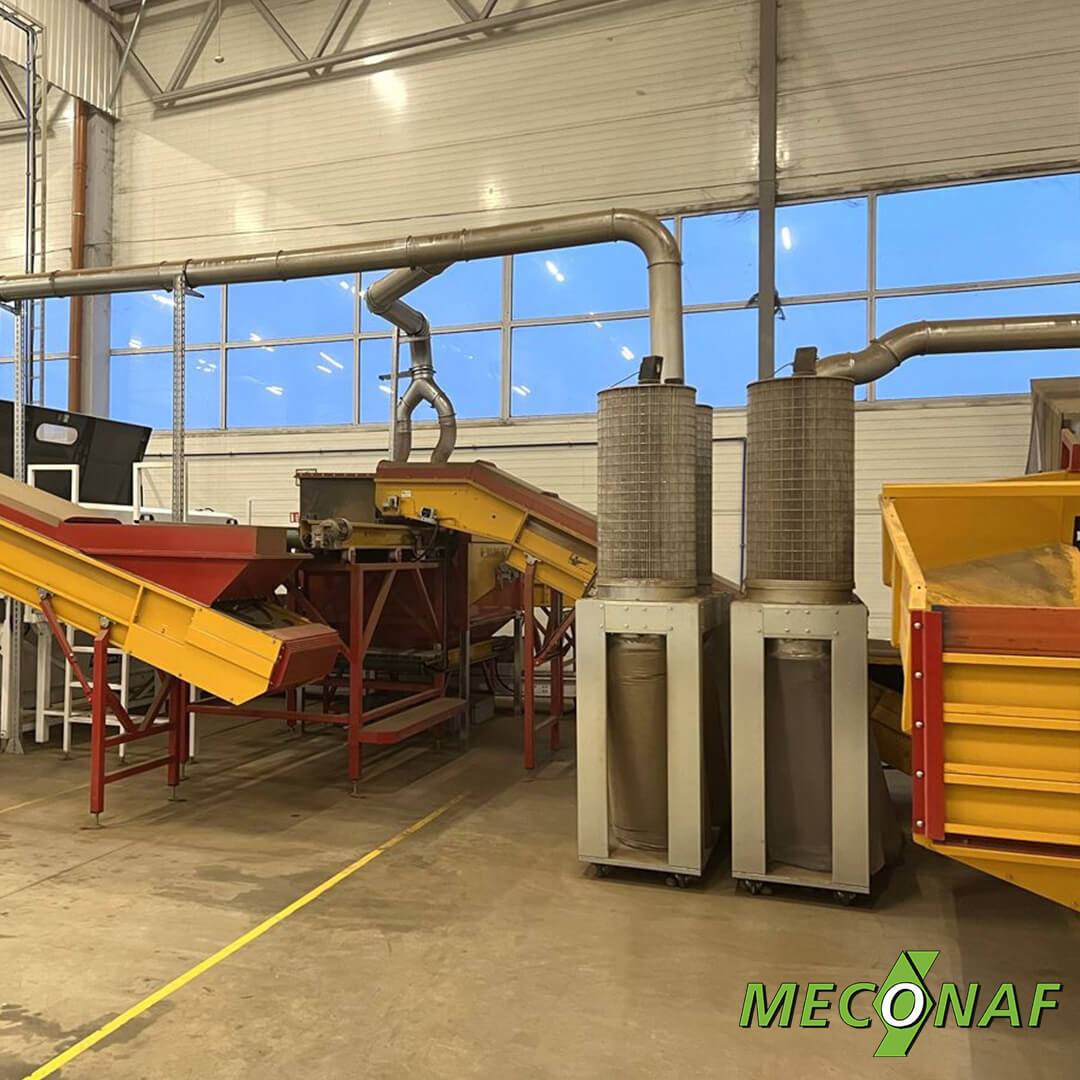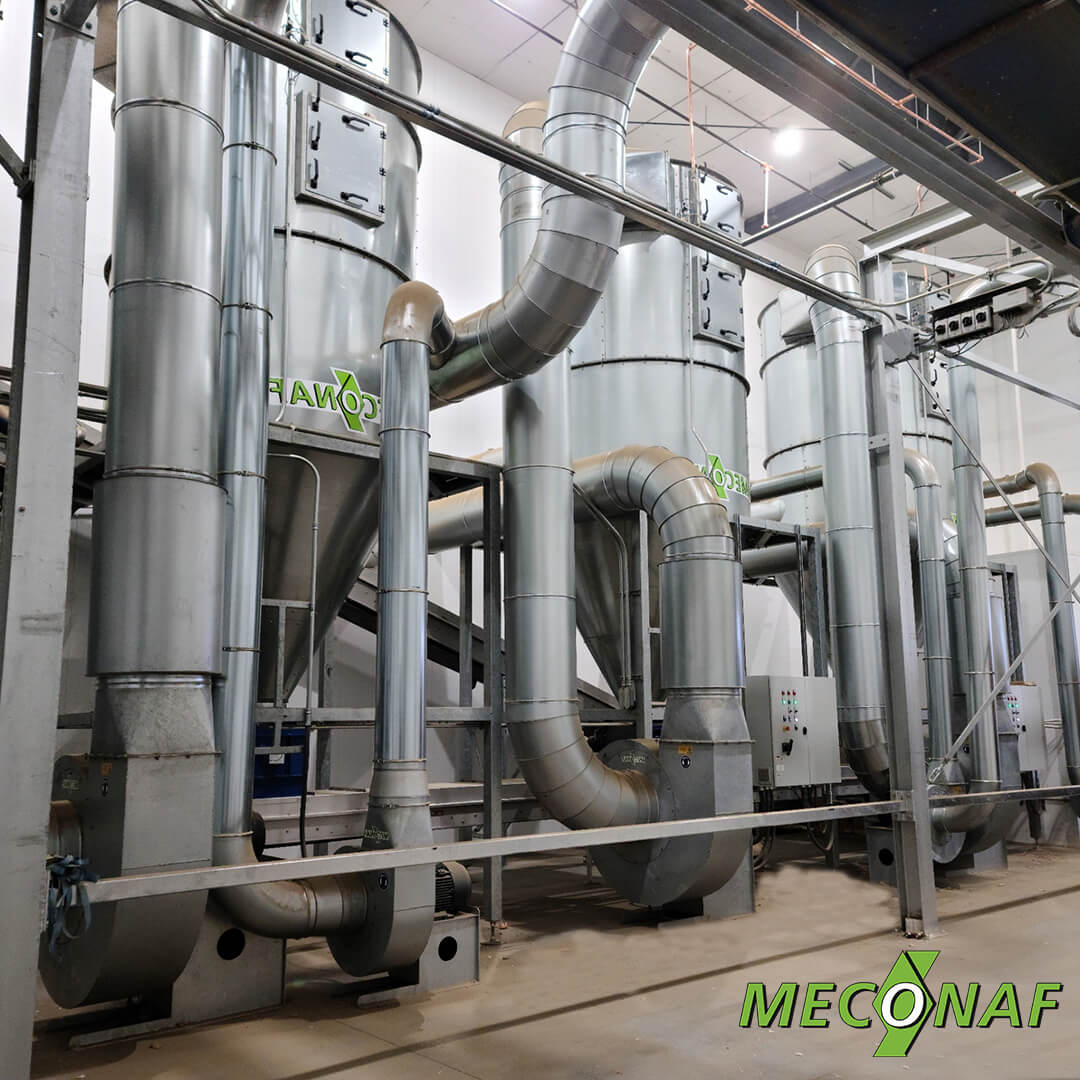
Extraction system for dust and skins
When the product is harvested and collected in loose storage or box storage, still a lot of soil is taking into the processing facility. There is a lot of processing done before the product coming from the storage is ready to be sold. The different processing machines will need extraction to prevent dust and skins floating around the area. We are talking about machine s like:
- Box tippers in to hoppers or bulkers
- Roller cleaners
- Onion toppers
- Grading machines
- Inspection tables
- Weighing machines
- Brushing machines
Also dropping points are causing dust and skins coming loose.Dust which is created by the machinery is extracted in the following way: The places where dust is spreading out, we will install dust tents.. By creating an under pressure inside this tent, we prevent dust spreading around in the building. The dust will stay inside this tent and is extracted by extraction system through the duct system, connected to this tent. Places to extract dust are for example at box tippers, roller-cleaning sets from a receiving hopper, brushing machines, web cleaners, onion topper and so on. The skins are extracted by specially made extraction hoods which are adjustable in height.
Windshifting
At the start of the processing line the onions will come from the box emptying station or a large hopper onto the processing line.
While this process is done with heigh capacity, the layer of onions will be double. We want to get rid of a lot of skins before the processing of the onions begins. With a standard extraction hood placed at the first dropping point on to a belt or elevator, we cannot take out enough skins, because most of the skins will be between and under the onions. But we can do it with a so called wind-shift system.
How does this work:
We will install a wind-shifting fan to blow air through the onion layer upwards. Above the this point, we will install a metal extraction hood to cover this part. We will connect the extraction system to this hood. The extraction, connected over there, is very strong and will extract the air stream, loaded with dust and skins, coming from de blowing fan.
The blowing fan can be used to extract dust from dust tents nearby. This will save capacity for the main extraction system
Extraction Hoods
Within the processing part of the line onions will move and will lose skins. It is important to extract skins to make the product cleaner and to prevent technical problems in the processing line. The best places to install an extraction hood for skins are the places where the product is falling or slid-ing from one machine to the other. In this product flow the skins can be extracted in an effected way.While onion skins can be large in surface the opening at the inlet of the extraction hood I larger than normal. On one side of the extraction hood a rubber flap is mounted to improve the working of the ex-traction of skins.The extraction hood is connected to a support. This support is mounted to the machine. The extraction hood is in height adjustable and can be turn in an angle if necessary.There are much possibilities to place an extraction hood in the processing line. Important positions are before the onion topper. To take out as much skins as possible here, the sieves of the onion-topper will stay clean for a longer period.
Mobile Units
In our program of extraction systems we have our mobile units. These units are used for one or two dust or skin extraction points. They are mounted with wheels. This means they are movable and usable at different places.The unit is built up as follows. The extraction points is connected to the unit with a duct system. While it are small units we advise to place them with a maximum distance of 5 meters away from the extraction point when skins are extracted. Point for extracting dust can be further away.Inside the unit there is a build in fan. This fan is transporting the waste from the extraction point(s) in to the plastic bag(s) which are mounted underneath the unit. The extracted air escapes through the filters and is cleaned for 99,9%. The filters need to be cleaned a couple of times per day For an 8 hour working day we advise to clean them 2 times per day. This is done in 2 ways. The simple way is with a handle on the filter. By turning this handle you activate the clean system inside the filter. The waste coming from the filter is falling done in to the plastic bag. The mobile unit are available in 3 types. The smallest one is with 1 filter cartridge and a motor of 2.2 kW. The middle type has a motor of 2.2 kW and 2 filter cartridges. The larges type is a unit with 3 filter cartridges and a motor of 3 kW.
Cyclone and Cyclone Filter Units
For the extraction of dust and skins on different places at the same time we advise to install a larger typ of extraction system. If we don’t need to worry about returning air in to the area of the building, where we extract the waste, we choose for an extraction system which cleans the extracted air only partly. 100% of the extracted skins are separated and about 70% of the dust is taken out of the extracted air. The air with around 30% of the dust is transported outside. This system is a standard cyclone system.The extraction system is based on under pressure. This means that the fan is behind the cyclone and only transports the air which has just been cleaned by the cyclone and only contains a little dust. This means the fan will stay clean.The motor of the fan is delivered in various sizes including the electrical cabinet with frequency control unit.The waste is discharged at the bottom off the cyclone by a rotating valve, and is collected in to a box or into a compactor or on a waste transport belt.
The cyclone system is placed outside.
For the extraction of the dust and skins at a processing line where temperature is an issue, it is recommended to choose for a compressed air-cleaned cyclone filter. The reason for it is, that these extraction units clean the air for 99,9%, so it can be returned in to the building. It also can be placed inside the building.
This saves you a lot of energy!
The build-in filter cartridges will be cleaned by a compressed air blast (3-5 bar dry clean air). This will happen when the unit is shot down. We strongly advise to turn of the installation at least 2 times a day to let the cleaning cycle run. It is important to choose for a large filter surface, which results in a low filter load. This results in a considerably longer life of the filters. When the filters are getting a bit more dirty, and the pressure difference before and after the filter is getting larger, the system will detect this and starts cleaning also during running. This is starting fully automatically. All the waste is falling down in to the cone of the cyclone filter unit, and is discharged by a rotating valve. and be collected in to a box or drop into a compactor or on a waste transport belt. After the cyclone-filter has filtered the air, this air will go through the fan and is blown back into the processing area with a low airspeed by the return air ducts, equipped with a silencer and after-filters. The filter installation is delivered as a complete package, excluding the electrical power supply to the control cabinet and the supply of compressed air. In side these cabinets we have contacts to connect to the central automation system



